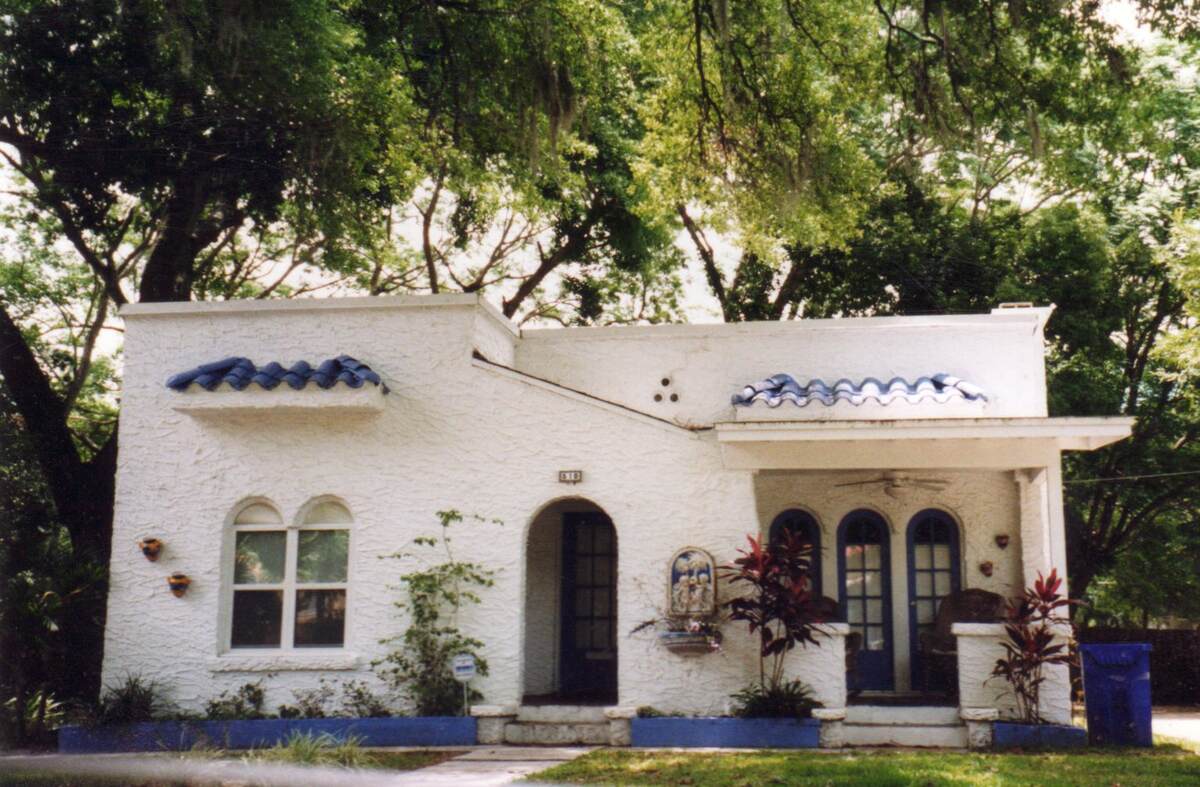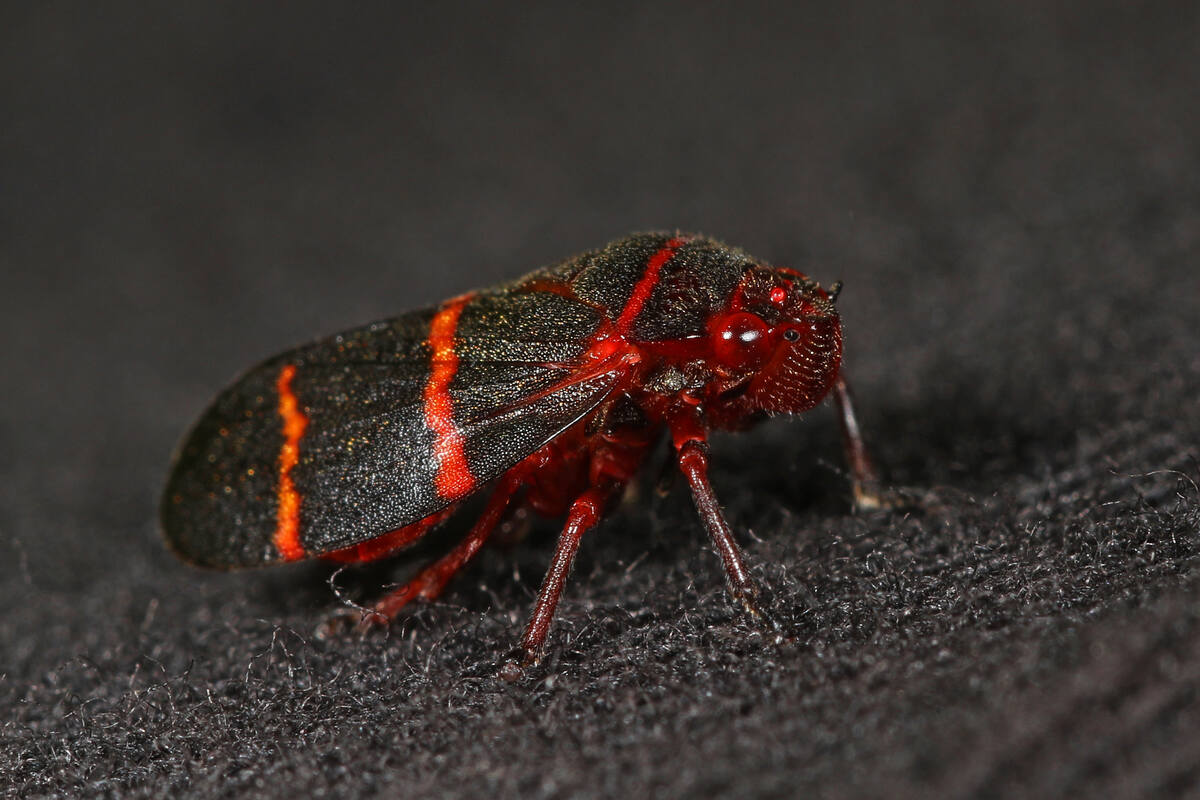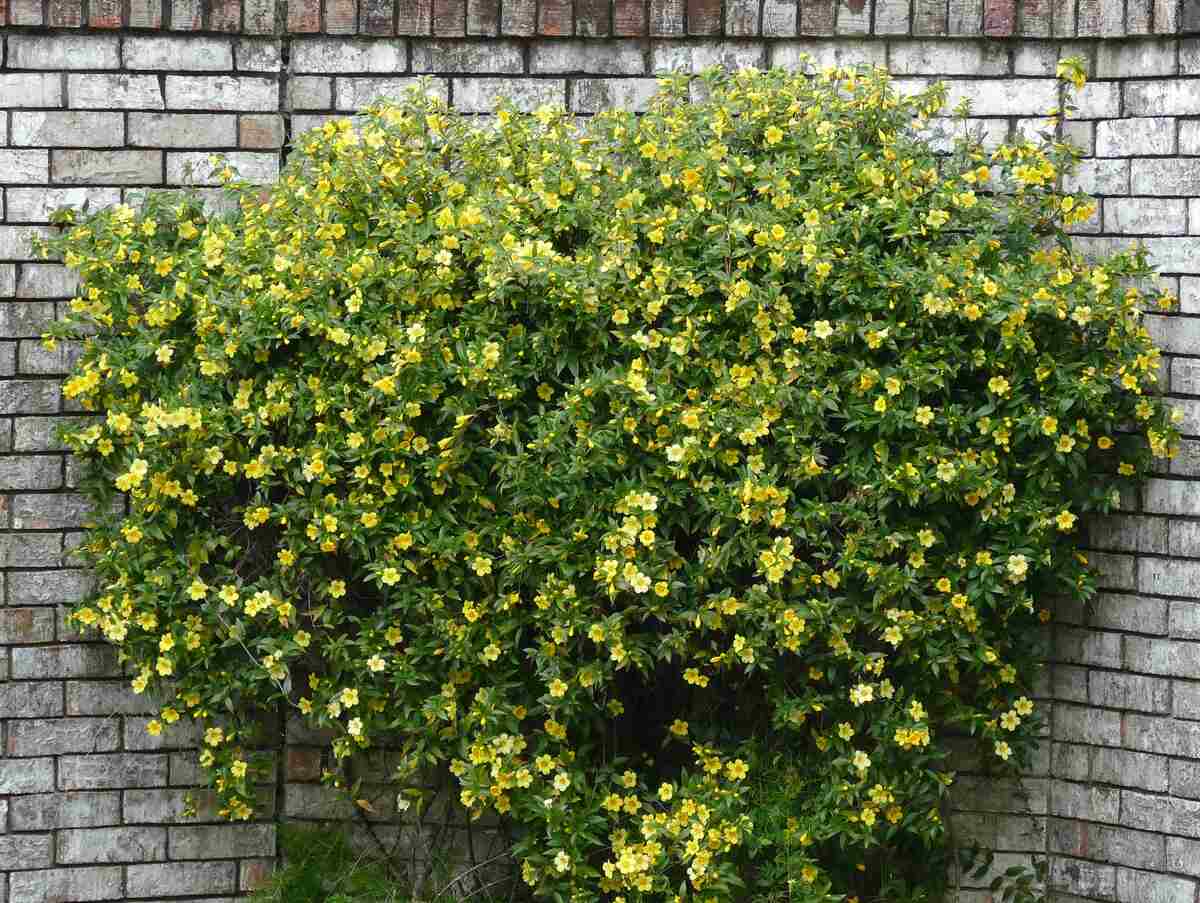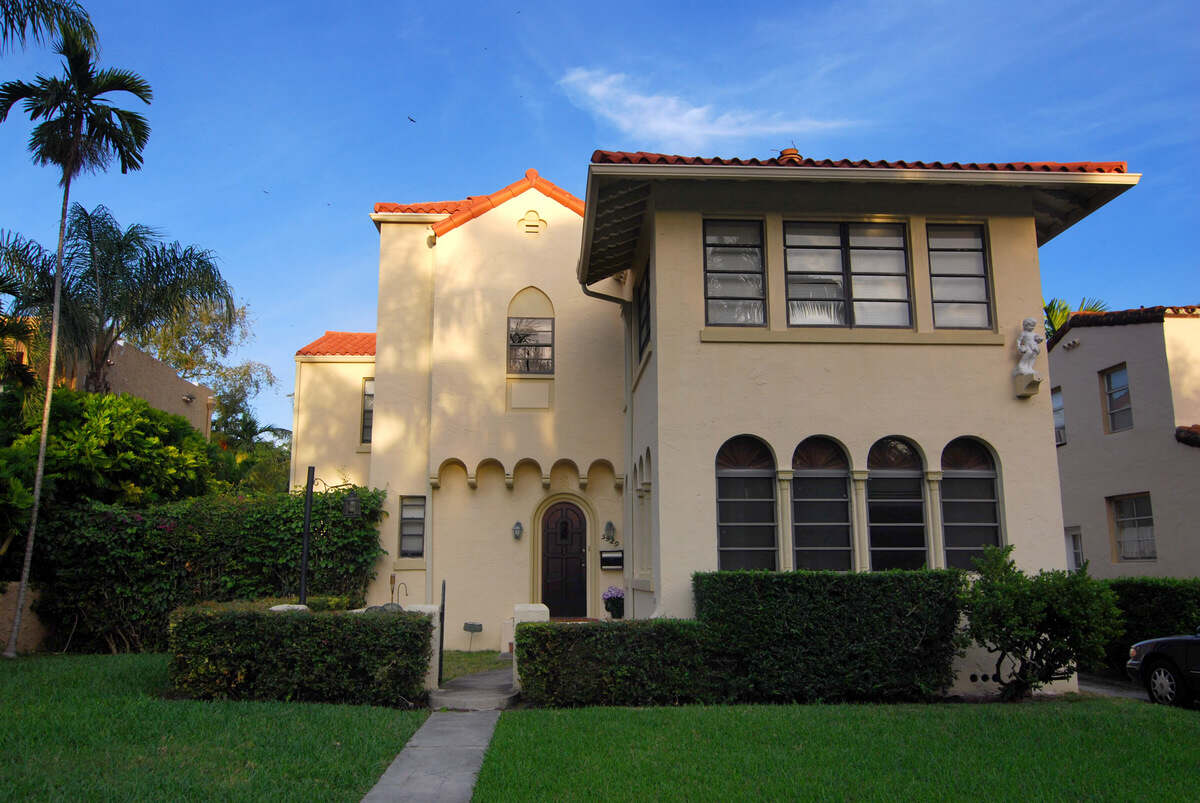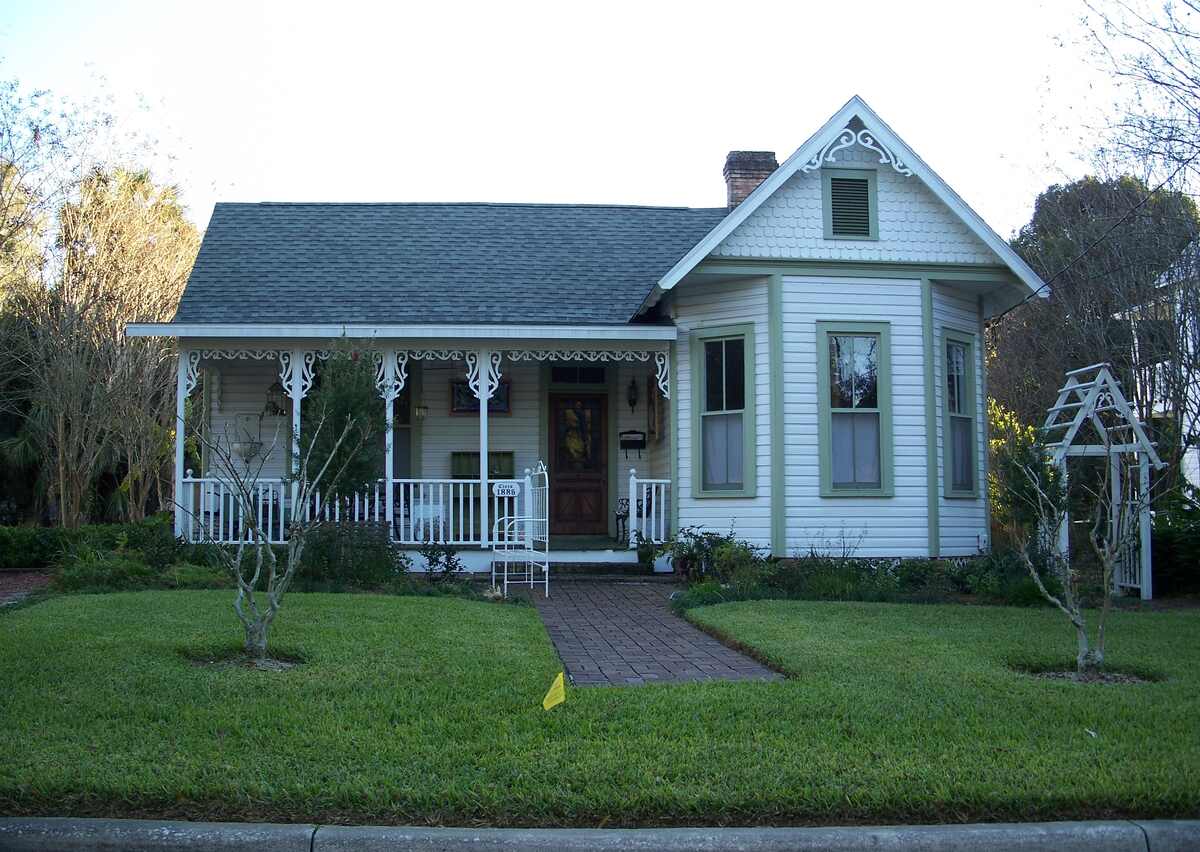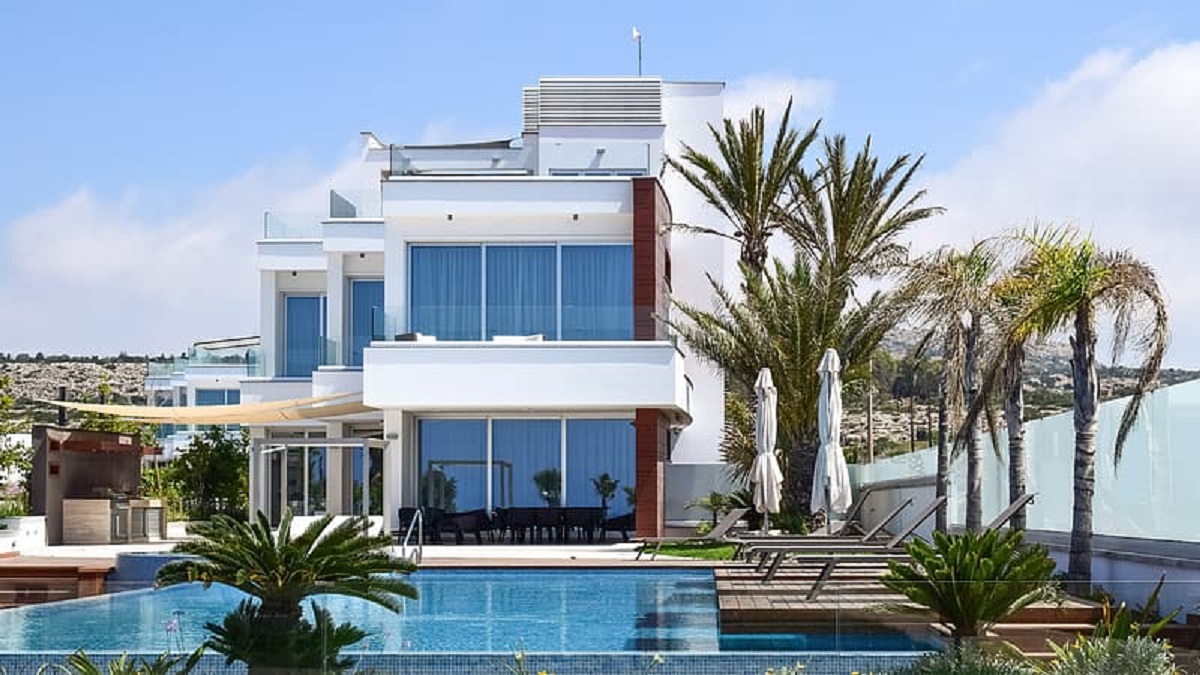
What’s your Miami vice? Ours is palm trees. Palm trees are a great addition whether you want your landscape to blend in with the crowd or stand out as a masterpiece. Here’s how to landscape with palm trees in Miami.
How to Choose the Right Palm Trees in Miami
South Florida boasts a tropical climate that’s hard to find elsewhere in the United States. According to the USDA Hardiness Zone Map, Miami falls within Zone 10b. With an average winter temperature of 63 to 78 degrees Fahrenheit, almost every species of palm tree can thrive in this region.
Since Miami is prone to tropical storms and hurricanes, choosing a palm tree that can withstand strong winds and saltwater spray is crucial. For this reason, consider palms with shorter, thicker trunks. Palm trees are an excellent choice when creating a hurricane-resistant landscape.
How to Landscape With Palm Trees in Miami
The iconic arching trunks and feathery fronds of palm trees can be found throughout Miami. They line the streets downtown, dot our world-famous beaches, and give our local landscapes a tropical flair. Miami’s climate and tropical vibes make it an ideal city for landscaping with palm trees.
With over 2,500 species of palms available, your landscape design options are endless. Below are five ways to incorporate palm trees into your Magic City landscape.
1. Create Shade With Palm Trees
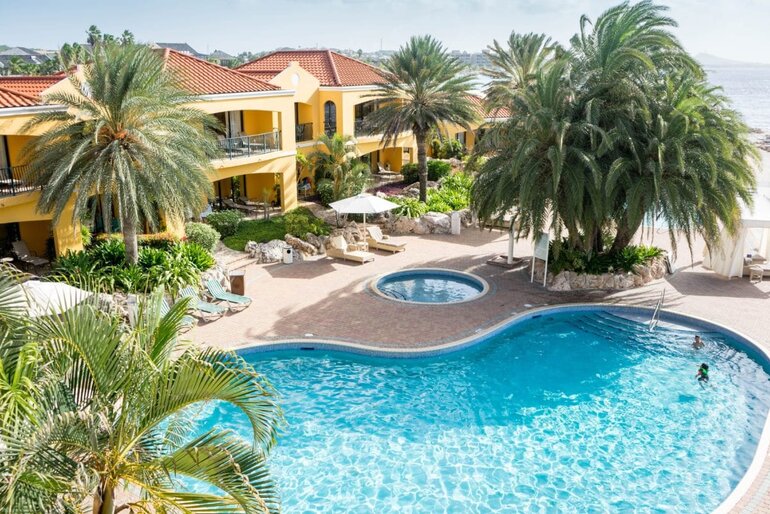
When you think of shade trees, palms may not be the first thing that comes to mind. However, many palm species have long, spreading fronds that provide the perfect shield from the Florida sun and allow you to enjoy your backyard paradise.
Palm fronds cast dappled shadows that block just enough sunlight with their delicate fronds. They’re perfect for landscaping around your Miami pool or on your patio, with specks of light dancing across your tropical escape.
Choosing a Palm Tree for Shade
Choosing the right palm tree for your outdoor space is vital. Consider the tree’s growth rate, maintenance requirements, and overall look. Keep in mind the available space to ensure the tree roots don’t pose any potential hazards. In general, palm trees’ roots are wider than deep, so if you are planting near sidewalks or a house, look at the mature size of the tree.
Here are some palm trees that work well as shade trees in Miami:
- Canary Island date palm (Phoenix canariensis): This Canary Islands native is famous in Florida landscaping for its beauty and ability to withstand salt spray and drought. Its fruit, known as dates, is a source of food for wildlife but not people.
- Pygmy date palm (Phoenix roebelenii): Due to its small size, elegance, and slow growth, this palm tree is popular for pool landscaping. A low-maintenance palm, it works well in a container garden.
- European fan palm (Chamaerops humilis): Also known as the Mediterranean fan palm, this palm is an excellent option for creating shade. Its large fronds can block out a considerable amount of light.
- Sago palm (Cycas revoluta): A nice choice for shade, the sago palm is not technically a palm, but a cycad. It adds texture and interest to a tropical-themed garden. However, it is poisonous to cats, so keep your furry friends in mind.
2. Plant Palm Trees for Privacy
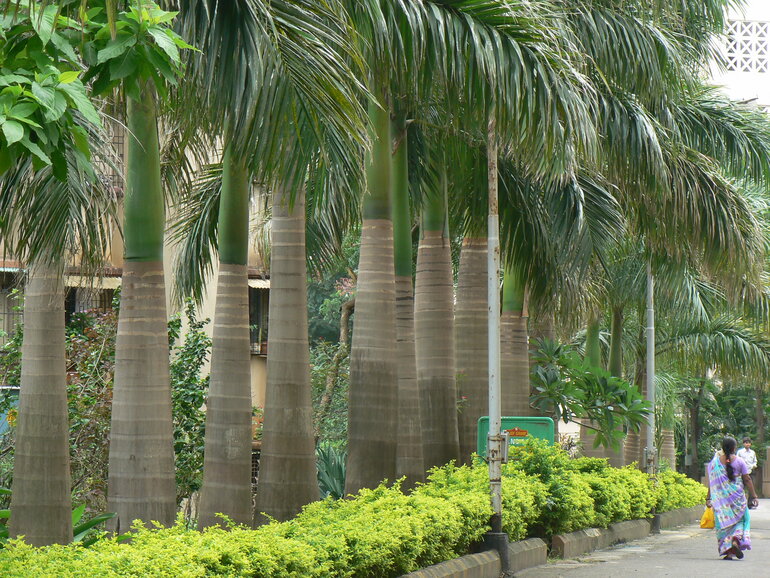
Palm trees can thrive as natural privacy hedges in Miami’s climate. Certain palm species can grow thick and tall, effectively blocking unwanted views and making them ideal when landscaping for privacy. Palm privacy hedges can enhance the look of your front yard, backyard, or swimming pool.
In order to create an effective privacy hedge, it is best to plant clumping species of palms. However, certain hurricane-resistant tall palm trees can do the trick for a more dramatic and glamorous look.
Types of palms that work well for privacy:
- Areca palm (Dypsis lutescens): The Areca palm, also called butterfly or yellow palm, is a popular choice for privacy hedges due to its height of up to 20 feet and lush, tropical look created by the long, arching fronds.
- Fishtail palm (Caryota mitis): If you want a privacy hedge that looks great and is easy to care for, consider this tropical tree. It can grow up to 20 feet tall and has fronds that resemble fishtails.
- Paurotis palm (Acoelorrhaphe wrightii): The paurotis palm is a native Florida palm perfect for creating a privacy hedge. It can grow up to 30 feet tall and has fan-shaped fronds that create a dense, lush living wall.
- Royal palm (Roystonea regia): A tall and striking palm tree, it can reach heights of up to 100 feet and has a traditional tropical appearance, with a straight, slender trunk and a crown of feathery fronds.
3. Frame an Entryway with Palm Trees
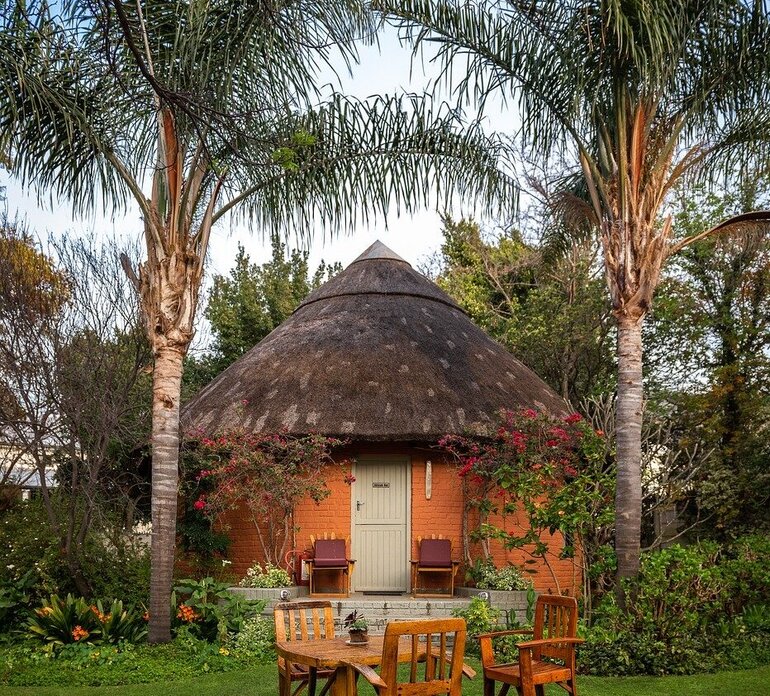
To create an inviting entrance to your home, think about framing your front door or driveway with palm trees if you need ideas for landscaping your front yard. Planting one tree on each side of the entryway can make a grand archway of palm leaves that will catch visitors’ attention.
Adding a tall palm tree to your entrance can create a sense of drama and exoticism. When planting a palm, know the species before you plant. Some can be planted right next to a foundation, while others need more space. Consider how the tree grows, how wide the canopy spreads, and the mature tree height when planning your landscape.
Types of palm trees for framing an entry:
- Sabal palm (Sabal palmetto): Also known as the cabbage palm and Florida’s state tree, sabal palms have broad, fan-shaped fronds and can reach heights of up to 80 feet. Due to its durability and lovely appearance, it is widely used in landscaping.
- Pindo palm (Butia odorata): This palm grows slowly and can produce fruit that is safe to eat but messy if not picked up. Its leaves are silver-green, and it can grow up to 20 feet tall.
- Buccaneer palm (Pseudophoenix sargentii): Ideal for shading entryways and creating privacy hedges due to dense foliage, this palm features a slender trunk and feathery fronds.
- Queen palm (Syagrus romanzoffiana): A South American native, this palm tree is commonly used in Miami for its ornamental value. It can grow up to 50 feet tall and produces small, yellow flowers that attract bees and other pollinators.
4. Use a Small Palm as a Focal Point
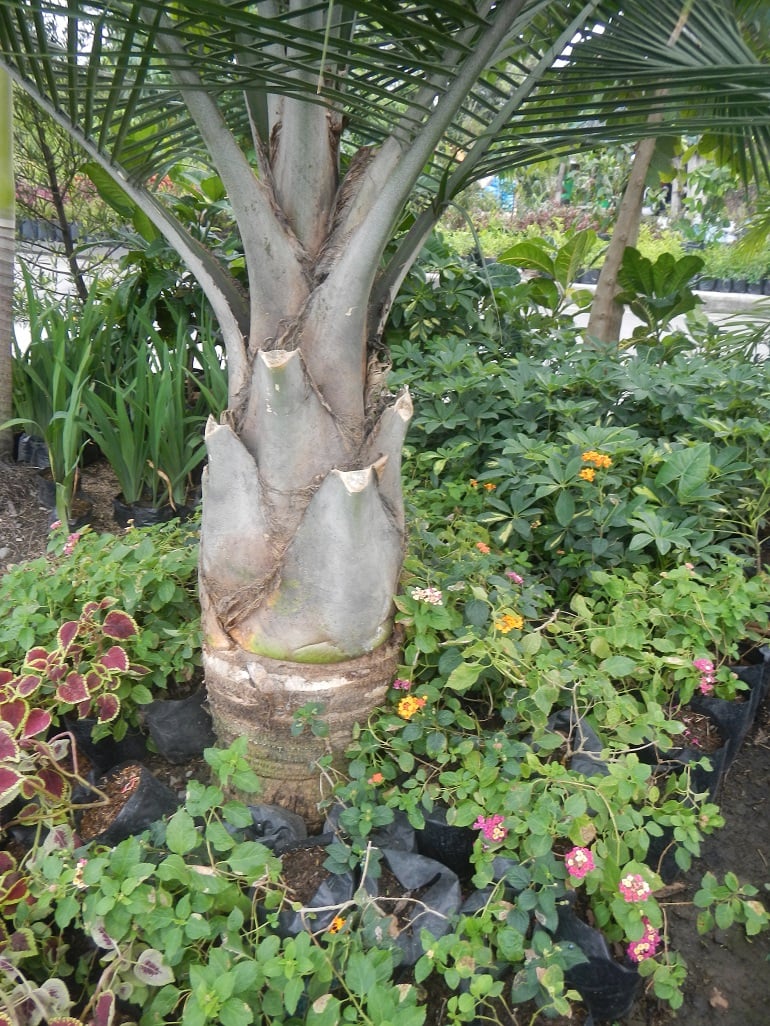
Incorporating a small palm tree into your flower bed can create a stunning landscape feature with a tropical feel. When choosing a palm tree, consider the overall design and aesthetic you want to achieve.
To create a cohesive look, use coordinating mulch and borders. Mulch can help retain moisture in the soil and reduce weed growth, while borders provide a neat and finished look. You can also add ground cover and tropical plants like hibiscus, bird of paradise, and Florida native plants to complement your palm tree and create a stunning garden.
Palms to use as a focal point:
- Bamboo palm (Chamaedorea seifrizii): This palm is known for its slender trunks and feathery fronds, making it a great option for adding texture to any space. It also thrives in low light, making it versatile if you want to build a container garden.
- Majesty palm (Ravenea rivularis): This palm species is native to Madagascar and can grow up to 10 feet tall. It requires regular watering and well-draining soil to prevent root rot.
- Cat palm (Chamaedorea cataractarum): This palm is an excellent option for small spaces due to its compact size. It can grow up to 6 feet tall and features bamboo-like stems and lush green foliage.
- Coontie palm (Zamia pumila): This slow-growing cycad features deep green fronds that add texture and dimension to any landscape. It’s an excellent choice for homeowners who want a low-maintenance landscape in Miami.
5. Make Your Yard Pop With Colorful Palms
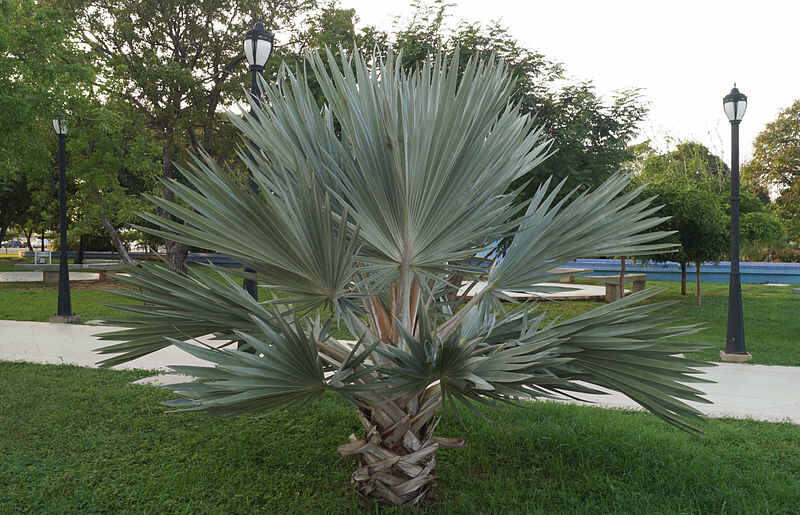
It’s no secret that palm trees are abundant in Miami. However, if you want your landscape to stand out, planting a typical palm species won’t cut it. Thankfully, many exotic palm trees with unique pops of color can make your yard one-of-a-kind.
Try planting a grove of palm trees with different color accents for an even more impressive display. Flame thrower palms, for example, have red new growth, while purple king palms have blue trunks. Mix and match the yellows, oranges, reds, purples, and blues that palms offer, and you can fill your yard with a veritable rainbow.
Types of palms that would work well for this look:
- Purple king palm (Archontophoenix purpurea): An exotic and unique palm tree distinguished by its reddish-purple crown shaft. It is also easily grown indoors and requires minimal maintenance.
- Flame thrower palm (Chambeyronia macrocarpa): This palm is beautiful and easy to grow. Its spectacular bright red new leaf remains red for approximately 10 days, making it a beautiful addition to any tropical garden.
- Lipstick palm (Cyrtostachys renda): This red palm is a tropical tree that gets its name from the vibrant red color of its crownshaft. The lower part of the trunk is a bright green with white rings.
- Mexican blue palm (Brahea armata): This palm’s blueish-gray leaves make it a unique and attractive addition to any garden or landscape. It provides a habitat for various species and works in xeriscapes because it is drought-tolerant.
FAQ: Landscaping With Palm Trees in Miami
You can plant palm trees in Miami at any time of the year, but it’s best to plant them in early summer when rainfall is more frequent since most newly planted palm trees require frequent watering.
Consider surrounding your palm trees with colorful blooms and foliage to complement them. South Florida is home to many vibrant landscape plants that would pair well with palm trees, such as:
● Sage (Salvia)
● Bougainvillea (Bougainvillea glabra)
● Canna lily (Canna x generalis)
● Blanket flower (Gaillardia)
The distance from your home varies depending on the species of palm tree. Some palms can be planted right next to a home, while others need more room. To determine the suitable distance, research the species’ potential height, trunk diameter, canopy cover, and whether there are hazards (like spines).
When to Hire a Landscaping Professional
You can make your grand landscaping dreams a reality with the help of a professional in your area. To stand out from the crowd, try these five ways to landscape with palm trees in Miami and learn how to care for your palms.
If you want more unique landscape design ideas for your specific space, call a professional Miami landscaper. Pros will help you figure out which species of palms would look best on your property and thrive in your soil type. All that’s left is to select your palm trees, choose your design idea, and get planting!
Main Image Credit: Pixabay
